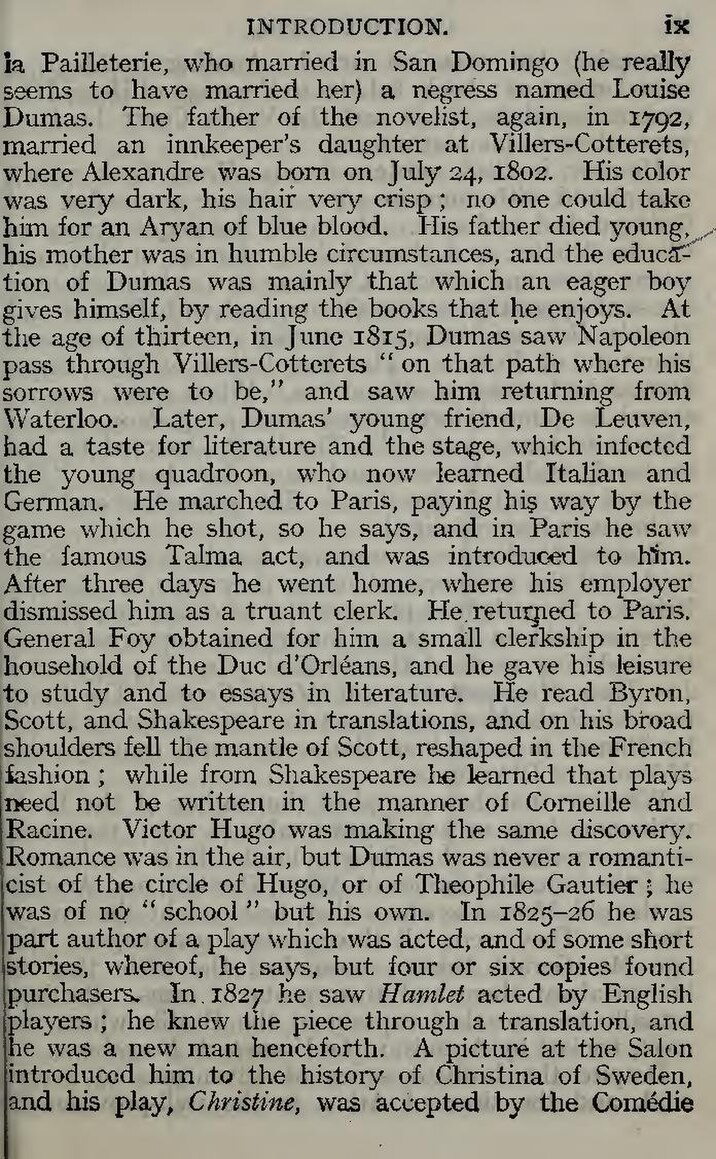la Pailleterie, who married in San Domingo (he really seems to have married her) a negress named Louise Dumas. The father of the novelist, again, in 1792, married an innkeeper's daughter at Villers-Cotterets, where Alexandre was born on July 24, 1802. His color was very dark, his hair very crisp; no one could take him for an Aryan of blue blood. His father died young, his mother was in humble circumstances, and the education of Dumas was mainly that which an eager boy gives himself, by reading the books that he enjoys. At the age of thirteen, in June 1815, Dumas saw Napoleon pass through Villers-Cotterets "on that path where his sorrows were to be,"" and saw him returning from Waterloo. Later, Dumas' young friend, De Leuven, had a taste for literature and the stage, which infected the young quadroon, who now learned Italian and German. He marched to Paris, paying his way by the game which he shot, so he says, and in Paris he saw the famous Talma act, and was introduced to him. After three days he went home, where his employer dismissed him as a truant clerk. He returned to Paris. General Foy obtained for him a small clerkship in the household of the Due d'Orléans, and he gave his leisure to study and to essays in literature. He read Byron, Scott, and Shakespeare in translations, and on his broad shoulders fell the mantle of Scott, reshaped in the French fashion; while from Shakespeare he learned that plays need not be written in the manner of Corneille and Racine. Victor Hugo was making the same discovery. Romance was in the air, but Dumas was never a romanticist of the circle of Hugo, or of Theophile Gautier; he was of no "school" but his own. In 1825-26 he was part author of a play which was acted, and of some short stories, whereof, he says, but four or six copies found purchasers. In 1827 he saw Hamlet acted by English players; he knew the piece through a translation, and he was a new man henceforth. A picture at the Salon introduced him to the history of Christina of Sweden, and his play, Christine, was accepted by the Comédie
Page:The three musketeers (IA threemusketeers1800duma).pdf/17
This page needs to be proofread.
INTRODUCTION.
ix
